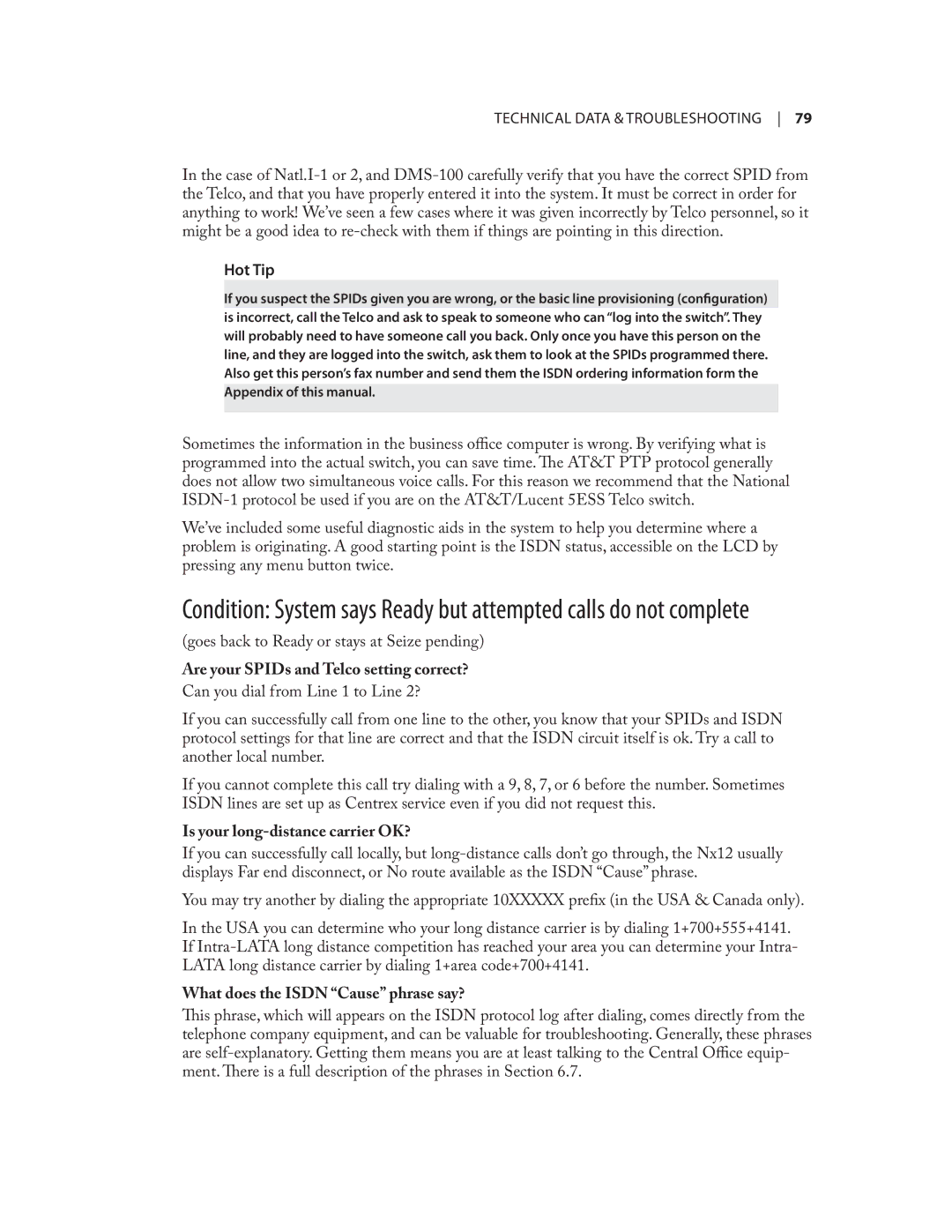
Technical data & troubleshooting 79
In the case of
Hot Tip
If you suspect the SPIDs given you are wrong, or the basic line provisioning (configuration) is incorrect, call the Telco and ask to speak to someone who can “log into the switch”. They will probably need to have someone call you back. Only once you have this person on the line, and they are logged into the switch, ask them to look at the SPIDs programmed there. Also get this person’s fax number and send them the ISDN ordering information form the Appendix of this manual.
Sometimes the information in the business office computer is wrong. By verifying what is programmed into the actual switch, you can save time. The AT&T PTP protocol generally does not allow two simultaneous voice calls. For this reason we recommend that the National
We’ve included some useful diagnostic aids in the system to help you determine where a problem is originating. A good starting point is the ISDN status, accessible on the LCD by pressing any menu button twice.
Condition: System says Ready but attempted calls do not complete
(goes back to Ready or stays at Seize pending)
Are your SPIDs and Telco setting correct?
Can you dial from Line 1 to Line 2?
If you can successfully call from one line to the other, you know that your SPIDs and ISDN protocol settings for that line are correct and that the ISDN circuit itself is ok. Try a call to another local number.
If you cannot complete this call try dialing with a 9, 8, 7, or 6 before the number. Sometimes ISDN lines are set up as Centrex service even if you did not request this.
Is your long-distance carrier OK?
If you can successfully call locally, but
You may try another by dialing the appropriate 10XXXXX prefix (in the USA & Canada only).
In the USA you can determine who your long distance carrier is by dialing 1+700+555+4141. If
What does the ISDN “Cause” phrase say?
This phrase, which will appears on the ISDN protocol log after dialing, comes directly from the telephone company equipment, and can be valuable for troubleshooting. Generally, these phrases are
